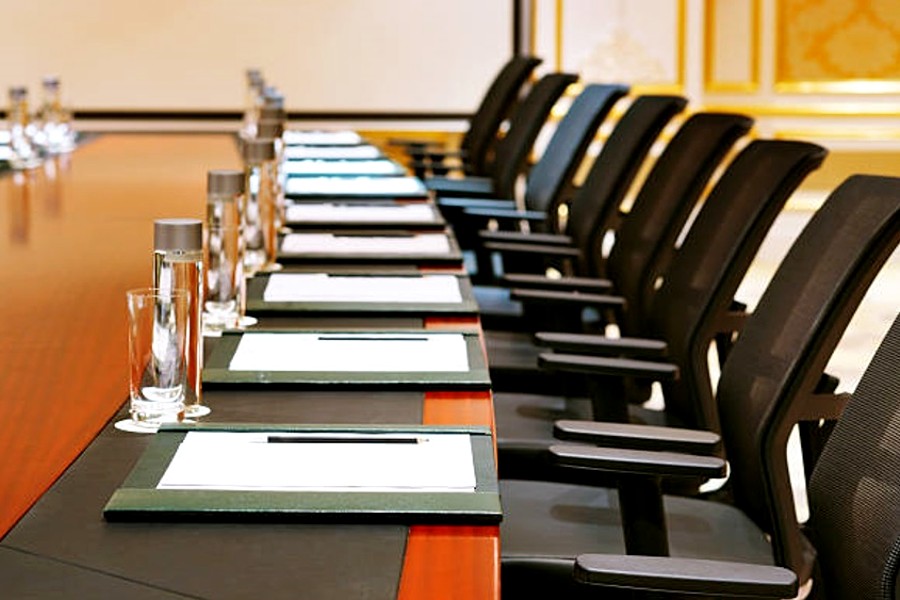
Conference table chairs play a crucial role in shaping the atmosphere and productivity of any meeting or conference.
Over the years, the design and functionality of these chairs have evolved significantly to meet the changing needs of professionals in a modern workplace. From basic, utilitarian chairs to ergonomically designed seats that prioritize comfort and collaboration, conference table chairs have come a long way. In this article, we will explore the evolution of conference table chairs and how these innovative designs have revolutionized the way people conduct meetings, fostering better collaboration, and enhancing overall productivity.
1. The Early Days: Basic Functionality
In the early days, conference table chairs were designed with simplicity and practicality in mind. They were often wooden or metal chairs with basic cushioning, offering minimal comfort. The primary focus was on providing a place to sit during meetings rather than ensuring optimal comfort for extended periods. As the workplace landscape changed, the need for more accommodating and comfortable seating became apparent.
2. The Rise of Ergonomics
The late 20th century witnessed a growing awareness of the importance of ergonomics in office furniture design. Ergonomics is the science of designing products that match the capabilities and limitations of the human body, enhancing comfort and reducing the risk of injuries or strain. This principle was gradually applied to conference table chairs, leading to significant advancements in their design.
Ergonomic conference chairs were designed to provide adequate lumbar support, adjustable height, and armrests to reduce strain on the back, neck, and shoulders. These improvements not only enhanced comfort but also had a positive impact on attendees’ focus and engagement during lengthy meetings.
3. Integration of Technology
As technology became more prevalent in meeting rooms, the design of conference table chairs had to adapt accordingly. With the inclusion of integrated screens, power outlets, and connectivity options, chairs became more than just seats. They transformed into functional workstations, enabling attendees to participate actively in discussions without the need to constantly move around the room.
Chairs with built-in tablets or flip-up desks allowed participants to take notes, access electronic documents, and interact with presentation materials seamlessly. This integration of technology further facilitated collaboration and improved overall meeting efficiency.
4. Flexible Seating for Collaborative Spaces
With the rise of collaborative work environments and agile methodologies, conference table chairs needed to be more versatile. The traditional static setup was replaced with flexible seating options that promoted interaction and teamwork. Chairs with swivel bases and wheels allowed participants to move around freely, encouraging impromptu discussions and idea-sharing.
Furthermore, modular seating arrangements enabled quick reconfiguration of meeting spaces, adapting to the specific needs of each session. This adaptability promoted a sense of inclusivity and encouraged engagement from all attendees, leading to more effective brainstorming and decision-making processes.
5. Sustainable Materials and Green Initiatives
As environmental consciousness grew, so did the demand for sustainable and eco-friendly conference table design. Manufacturers started using recycled materials, responsibly sourced wood, and low-toxicity components to reduce their carbon footprint. Sustainable practices not only benefit the environment but also contribute to a positive brand image for companies.
6. Wellness-Oriented Designs
In recent years, wellness has become a priority for many organizations. As a result, conference table chairs have evolved to promote physical well-being and productivity. Chairs with adjustable features, such as height, lumbar support, and tilt mechanisms, encourage dynamic sitting postures, reducing the risk of musculoskeletal issues associated with prolonged sedentary behavior.
Some advanced conference chairs even incorporate sensors and smart technology to monitor an individual’s sitting habits and encourage periodic movements or posture adjustments. By focusing on wellness-oriented designs, these chairs contribute to a healthier and more comfortable workspace, which, in turn, boosts employee satisfaction and performance.
7. Aesthetic Appeal and Customization
In addition to functionality, the aesthetics of conference table chairs have also seen significant improvement. Companies recognize the importance of creating a visually appealing and cohesive workspace. As a result, modern conference chairs come in a wide range of styles, colors, and materials to match the interior design and branding of the company.
Moreover, companies have the option to customize chairs with their logos, colors, or unique patterns, adding a touch of individuality to their conference rooms. Personalized seating arrangements not only create a lasting impression on clients and guests but also instill a sense of pride and belonging among employees.
Conclusion
Conference table chairs have come a long way from their humble origins, evolving into ergonomic, technologically integrated, sustainable, and wellness-oriented designs. By recognizing the importance of comfort, collaboration, and employee well-being, companies have transformed conference rooms into dynamic spaces that foster creativity, productivity, and meaningful interactions.
As workplaces continue to adapt to new challenges and trends, conference table chairs will undoubtedly continue to evolve. The ongoing pursuit of better designs, enhanced functionality, and improved sustainability ensures that these essential pieces of furniture will remain at the forefront of fostering effective communication and collaboration in modern businesses.
- LISC CEO Michael T. Pugh Recognized Among 2024 Worthy 100 Leaders
- NY Lawmakers Celebrate Historic MENA Data Recognition Bill Signed By Hochul
- Sponsored Love: Leadership Skills Training Courses: Invest In Your Future Today
- Senator Hoylman-Sigal Calls On Independent Schools To Adopt NYC Public School Calendar
- Mayor Adams Celebrates 65 Million NYC Visitors In 2024, Second-Highest Ever
Become a Harlem Insider!
By submitting this form, you are consenting to receive marketing emails from: . You can revoke your consent to receive emails at any time by using the SafeUnsubscribe® link, found at the bottom of every email. Emails are serviced by Constant Contact









